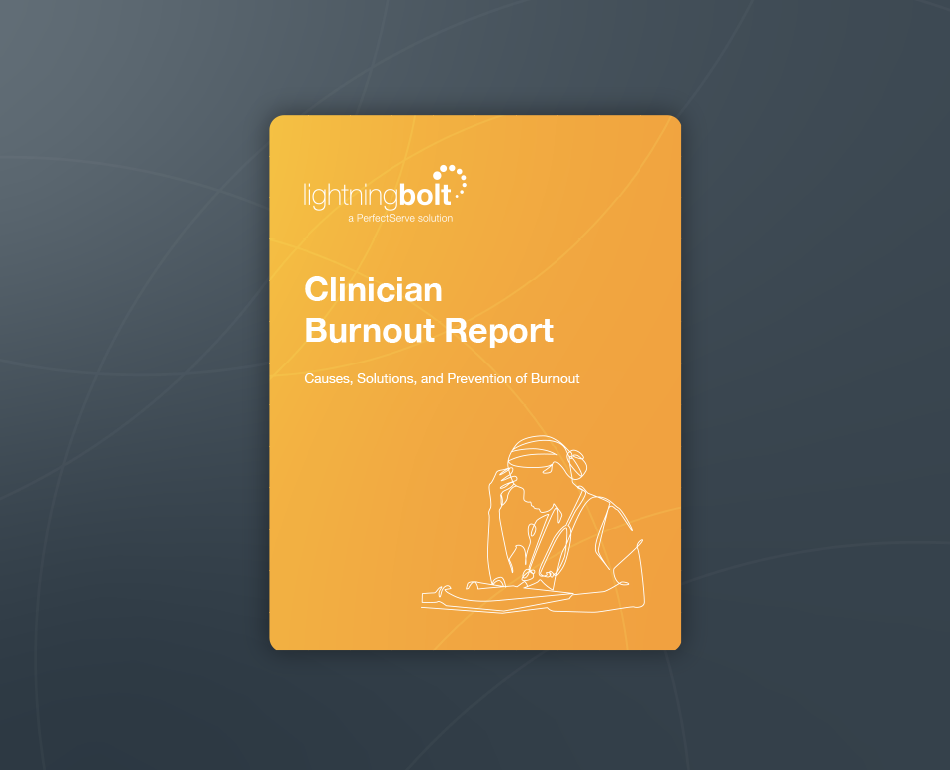How Does Provider Scheduling Impact Patient Care?
TABLE OF CONTENTS

Creating positive experiences for both providers and patients is a primary goal for every health system. With pressing issues like provider burnout and staffing shortages still presenting major challenges for the healthcare industry, it’s worth considering how a foundational piece of technology like physician scheduling software can impact not just physicians but also the patients they serve.
Manual schedule builds and rudimentary scheduling software cause headaches for administrators and physicians. That’s precisely why advanced scheduling solutions exist—to streamline the process and build better, more balanced schedules while taking provider preferences into account.
But how, exactly, does optimized provider scheduling impact patient care? We’re glad you asked.
Improving the Patient Experience
Patient Expectations
Patient expectations have changed. They want more convenience, more access to online or virtual care, and shorter wait times.1 The waiting room is a “key location for patient dissatisfaction,”2 as 84% of patients in clinic and hospital lobbies agree that a reasonable wait time is crucial to the quality of their experience.3 One study cited operating room scheduling and efficiency as an often-unanticipated factor in the competition for inpatient beds,4 meaning an advanced scheduling solution—which improves scheduling efficiency—can improve patient satisfaction and access.
Optimized provider scheduling can reduce patient wait times and increase access to care by tracking which providers have a high or low patient load and making corrections that yield more equitable schedules for hospital care teams. This allows organizations to better align resources with patient demand to ensure patients don’t experience excessive wait times or, even worse, get turned away entirely. Improving the patient experience reduces patient leakage and mitigates some of the downstream financial impacts associated with lower patient satisfaction levels.5
Patient Outcomes
Increasing patient access is beneficial not only to the patient experience but also to health outcomes. When wait times are excessive or health systems are understaffed, patients may not be able to see a provider in a timely manner. Unsurprisingly, this can easily lead to negative health outcomes. For example, if an emergency department (ED) builds schedules manually and has no (or limited) ability to analyze trends—say, for patients seen per doctor per day—they may not be able to anticipate or adequately respond to fluctuating patient loads. A patient who arrives at an understaffed ED is likely to experience delayed treatment.
According to research, ED crowding is “associated with higher morbidity and mortality, delayed pain control, delayed time to administration of antibiotics, increased medical errors, and less-than-optimal health care.”6 The same study found that decision-to-departure time intervals for patients admitted to the ED are directly tied to ED crowding. Delayed treatment can make a patient’s total care journey more expensive, not to mention the fact that it ends up taking more of their time and potentially souring their relationship with the healthcare organization in question. And because research shows that positive patient-provider relationships are linked to better patient outcomes,7 it’s essential to create an environment where providers have a balanced workload to give them optimal time to interact with and address the concerns of each patient.
An optimized scheduling solution can mitigate the risk of negative patient outcomes by:
- Ensuring equitable distribution of shifts to reduce propensity for provider burnout
- Analyzing patient census data to accurately staff care locations
- Effectively scheduling OR rooms to decrease surgery wait times
- Preventing providers from being overworked or underutilized, which protects provider wellness and profitability at the same time
Optimizing Provider Workflows
Provider Preferences and Wellness
When schedules are optimized, patients aren’t the only benefactors. According to the National Library of Medicine, the “impact of having the right amount of resources, with the right skills and experience level, can significantly improve the quality of service for patients, as well as working conditions for physicians.”8 Advanced scheduling software can incorporate provider preferences as rules during schedule builds. Schedules that account for these preferences give providers more influence over the hours they work and more flexibility to plan their lives outside of work. Schedules can even be constructed such that physicians have time blocked off for non-clinical tasks—like paperwork, meetings, and treatment planning—in addition to procedures and/or appointments with patients.
Research on the impact of attending physician workload on patient care found that physicians reported they could safely see 15 patients per shift if their effort was 100% clinical.9 With an optimized scheduling solution, rules can be put in place to ensure physicians have a maximum number of patients they can see each shift. This makes the most of the provider’s time and respects their limits, which can help to decrease feelings of burnout. Research has shown repeatedly that providers who experience burnout pose a greater risk to patient safety because “their physical and cognitive resources may be reduced,” which means every effort should be made to support provider wellness.10
Optimized scheduling can reduce burnout by:
- Ensuring equitable shift distribution and sustainable work hours
- Increasing schedule transparency
- Providing real-time schedule access
- Simplifying and automating shift swaps and time-off requests
- Increasing the approval rate for time-off requests
- Helping administrators support clinical staff with data-rich analytics capabilities
It’s worth mentioning here that integrations with other key systems can also aid in boosting provider satisfaction. For example, workflows are more streamlined when provider scheduling solutions are integrated with an organization’s EHR thanks to real-time access to schedules, provider availability, and other key metrics. Other available integrations include the call center, clinical communication solutions, patient appointment scheduling, operating room systems, and many more.
In reality, all aspects of provider scheduling have the potential to impact patient care. Schedules built with AI-enabled technology can reduce patient wait times, increase patient satisfaction, and improve provider-patient relationships. Optimized scheduling is also a powerful vector for alleviating provider burnout, not the least of which because it allows providers to have more manageable and predictable workloads.
Lightning Bolt Scheduling protects patient access and gives providers the autonomy they deserve when it comes to their own schedules. Ready to learn more?
1 3 Ways Patient Expectations of Healthcare Changed Since COVID-19, DocResponse: https://www.docresponse.com/blog/patient-expectations-of-healthcare/
2 How to Improve Communication About Wait Times, Patient Satisfaction, Patient Engagement HIT: https://rb.gy/ro8rpc
3 Long Appointment Wait Time a Detriment to High Patient Satisfaction, Patient Engagement HIT: https://rb.gy/6xaj2x
4,6 Crowding in the Emergency Department: Challenges and Best Practices for the Care of Children, American Academy of Pediatrics: https://rb.gy/zsq3ue
5 Why Your Patient Wait Time Is a Problem & How To Fix It, CaptureBilling, Manny Oliverez: https://capturebilling.com/why-your-patient-wait-time-is-a-problem-how-to-fix-it/
7 Assessing the Longitudinal Impact of Physician-Patient Relationship on Functional Health, Annals of Family Medicine: https://www.annfammed.org/content/18/5/422
8 Productivity-driven physician scheduling in emergency departments, NIH: https://www.ncbi.nlm.nih.gov/pmc/articles/PMC8143641/
9 Impact of Attending Physician Workload on Patient Care: A Survey of Hospitalists, JAMA Network: https://jamanetwork.com/journals/jamainternalmedicine/fullarticle/1566604\
10 Nursing Workload and Patient Safety—A Human Factors Engineering Perspective, NIH: https://www.ncbi.nlm.nih.gov/books/NBK2657/#



